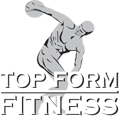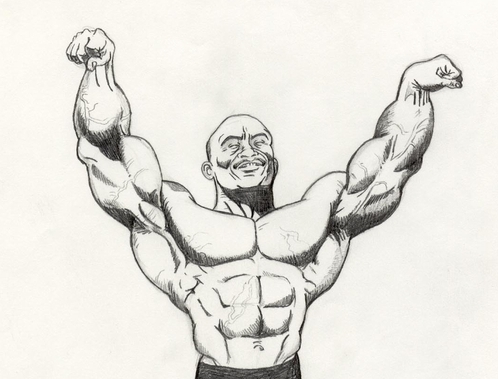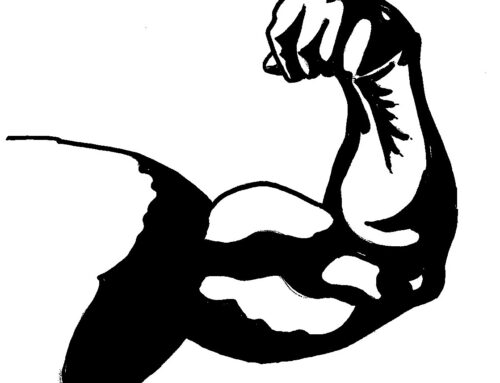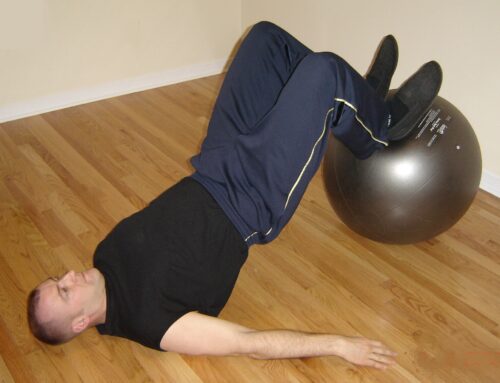So you want to gain some lean muscle? You’re looking to get “swole” but you’re getting confused by all the different training recommendations? Well, you’re in luck. My friend and colleague Jay Horn has shared this guest post detailing the key causes of hypertrophy. If you follow his suggestions and make sure your nutrition is on point (you are consuming adequate calories and macro-nutrients), you will grow. Let’s take a closer look:
How to Induce Hypertrophy
By Jay Horn
Hypertrophy is a multifactorial process – this includes:
- Inroad (weakening of muscle)
- Increased progressive tension
- Accumulated fatigue (hormonal response)
- Microtrauma (tearing of muscle fibers where repair and growth can occur)
No matter what the muscles MUST undergo a progressive tension stimulus.
There are different training protocols out there that produce results, but nonetheless this is the most important factor: Progressive tension. This means one must load the muscle efficiently and have enough recovery ability to go back in and progress from the previous workout. If this is not balanced you WILL NOT GROW.
Our muscle fiber make-up is a big determinant of how we will respond to strength training. If we are able to figure out our fiber make-up we can then address that specific muscle group with a protocol that would be advantageous for hypertrophy. There have been many whom have tried the standard HIT protocols that have not responded with muscular size, then there are those that do great with HIT. However, with that being said I firmly believe there is more to the picture than we think.
There are people that respond better to a “Not-To-Failure” approach with a slightly higher volume protocol and some respond better to a “Lift-To-Failure” approach with low volume. At this point I can only imagine the HIT peeps are probably yelling at their computer wanting to punch me in the face for even speaking of more volume! Heresy! But let’s not get any panties in a twist here, remember even Doug McGuff spoke of “Modest Intensity Responders” in Body by Science: A Research Based Program to Get the Results You Want in 12 Minutes a Week.
Heavier loads will typically be a lower rep range/lower TUT. For this example we will use the rep range of 5 – 8. With a lower rep range protocol, the use of FT fibers will be used very quickly, with little accumulated by-products of fatigue. There is a sequential recruitment of fibers from ST to FT, but since the load is heavier the FT fibers will be recruited much quicker. If load is significant enough it will produce enough microtrauma where there will be inflammation, and satellite cell proliferation can occur. This is a process that repairs the torn muscle fibers, which has the potential to increase the cross-sectional area of the muscle (if recovered).
Lighter loads will be a higher rep range/higher TUT. For this example we will use a 12 – 15 range. Higher repetition ranges has been shown to increase testosterone, growth hormone (GH) and insulin-like growth factor 1 (IGF-1). These hormones are a HUGE factor in hypertrophy. The more mechanical work you do, the more output you have of these hormones; to a point that is.
For some people the same rep range/TUT protocol is NOT sufficient for every muscle. This I believe is predicated on fiber types in various muscle tissue within the person. The muscles that have a higher % of ST fibers need a higher rep range and more volume to accommodate a thorough recruitment of those fibers in that particular muscle. Muscles that have a higher % FT muscle fibers respond much better to a heavier tension and would be best to stay within a lower rep range/lower TUT with low volume.
Conclusion:
Multiple, sub-failure sets may be good IF the subject can’t go to true volitional fatigue (failure) or may respond better to a higher rep range/TUT (because of fiber type). Low volume, failure sets may be best if the subject can handle such intensity and responds well to it.
No matter what, whether your rep range is higher or lower or more volume is added, you must ALWAYS progress. You must always strive to either lift more weight, add reps or both. Progressive tension is key to muscle growth.
Now get out there and GROW!
References:
Kraemer, William J.; Ratamess, Nicholas A. (2005)
Hormonal Responses and Adaptations to Resistance Exercise and Training
Sports Medicine, Volume 35, Number 4, pp. 339-361(23)
Shoenfeld, B.; (2010)
The Mechanisms of Muscle Hypertrophy and Their Application to Resistance Training
Journal of Strength & Conditioning Research: Volume 24 – Issue 10 – pp 2857-2872
Kwon, Y.S.; Kravitz, L. (2006)
How do muscles grow?
IDEA Fitness Journal. 3(2). 23 – 25
McGuff, D.; Little, J. (2009)
High intensity repsonders/ Modest intensity responders (The Genetic Factor)
Body by Science: Chapter 8 – p172-174
Bubbico. A.; Kravitz, L. (2011)
Muscle hypertrophy: New insights and training recommendations
IDEA Fitness Journal, 8(10).. 23-26







Magnificent goods from you, man. I’ve understand your stuff previous to and you are just extremely wonderful. I actually like what you have acquired here, certainly like what you’re saying and the
way in which you say it. You make it entertaining and you
still care for to keep it smart. I can’t wait to read far more from you. This is actually a wonderful website.
I comment each time I like a post on a website or I have something to
add to the discussion. Usually it’s a result of the sincerness displayed in the article I browsed. And on this post Muscle Building 101: Main Causes of Hypertrophy. I was actually excited enough to drop a thought 😛 I do have some questions for you if you usually do not mind. Could it be only me or does it look as if like a few of the remarks appear as if they are written by brain dead individuals? 😛 And, if you are posting at other sites, I would like to follow you. Would you list all of all your shared sites like your Facebook page, twitter feed, or linkedin profile?
Hey thanks for the comment… here are my social media sites you requested:
http://www.facebook.com/topformfitness
http://www.twitter.com/topformfitness
http://ca.linkedin.com/in/topformfitness
I look forward to connecting with you there!
Josh
I need to to thank you for this good read!! I definitely enjoyed every
bit of it. I’ve got you book-marked to look at new stuff you post…
Hi! I’ve been following your blog for a long time now and finally got the courage to go ahead and give you a shout out from New Caney Texas! Just wanted to tell you keep up the fantastic job!
Hi, just wanted to say, I enjoyed this post.
It was practical. Keep on posting!
google…
Google http://news.google.com…
… [Trackback]
[…] Read More here: top-form-fitness.com/fitness-blog/hypertrophy-gain-muscle/ […]
[…] First of all, here’s a link to an expert guest blog post on How to Induce Hypertrophy: https://top-form-fitness.com/fitness-…y-gain-muscle/ […]
Very descriptive article, I liked that a lot. Will there be
a part 2?
I don’t even kmow the way I stopped up right here, bbut I assumed this put up was once good.
I do not realize who you might bee however definitely you’re going to a famous blogger if you happen to are not already.
Cheers!
I’m still learning from you, while I’m trying to achieve
my goals. I certainly love reading everything that is written on your
blog.Keep the articles coming. I enjoyed it!